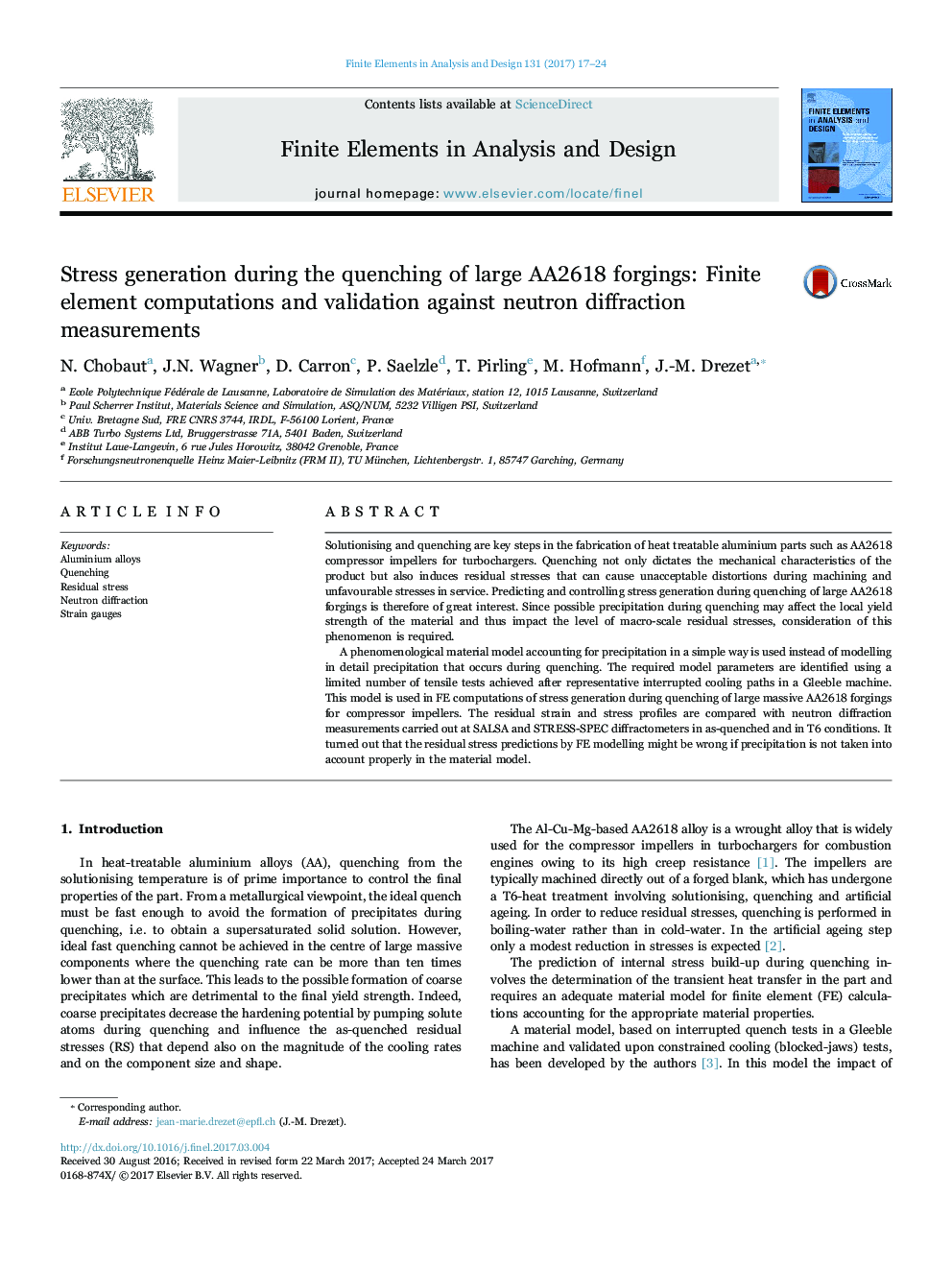| Article ID | Journal | Published Year | Pages | File Type |
|---|---|---|---|---|
| 4966183 | Finite Elements in Analysis and Design | 2017 | 8 Pages |
Abstract
A phenomenological material model accounting for precipitation in a simple way is used instead of modelling in detail precipitation that occurs during quenching. The required model parameters are identified using a limited number of tensile tests achieved after representative interrupted cooling paths in a Gleeble machine. This model is used in FE computations of stress generation during quenching of large massive AA2618 forgings for compressor impellers. The residual strain and stress profiles are compared with neutron diffraction measurements carried out at SALSA and STRESS-SPEC diffractometers in as-quenched and in T6 conditions. It turned out that the residual stress predictions by FE modelling might be wrong if precipitation is not taken into account properly in the material model.
Related Topics
Physical Sciences and Engineering
Computer Science
Computer Science Applications
Authors
N. Chobaut, J.N. Wagner, D. Carron, P. Saelzle, T. Pirling, M. Hofmann, J.-M. Drezet,
